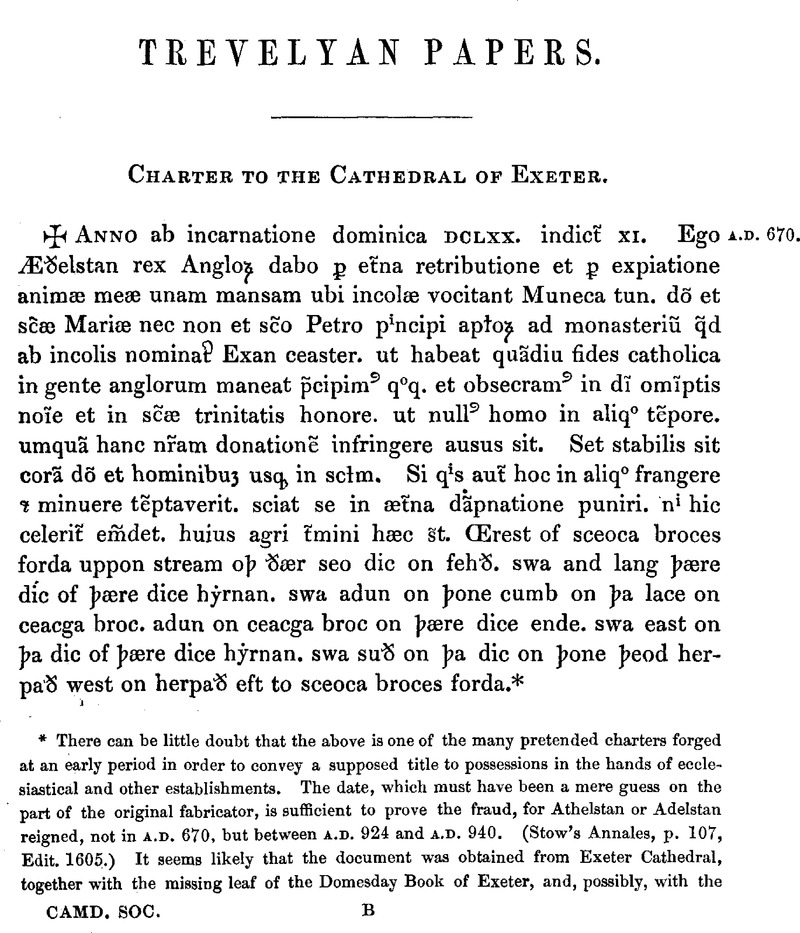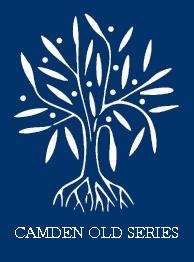No CrossRef data available.
Article contents
Charter to the Cathedral of Exeter
Published online by Cambridge University Press: 23 February 2010
Abstract

- Type
- Trevelyan Papers
- Information
- Copyright
- Copyright © Royal Historical Society 1857
References
* There can be little doubt that the above is one of the many pretended charters forged at an early period in order to convey a supposed title to possessions in the hands of ecclesiastical and other establishments. The date, which must have been a mere guess on the part of the original fabricator, is sufficient to prove the fraud, for Athelstan or Adelstan reigned, not in A.D. 670, but between A.D. 924 and A.D. 940. (Stow's Annales, p. 107, Edit. 1605.) It seems likely that the document was obtained from Exeter Cathedral, together with the missing leaf of the Domesday Book of Exeter, and, possibly, with the fragment relating to the Seven Bishops. An Edward Willoughby was Dean of Exeter from 1496 to 1508 ; and about a century and a half subsequently a Trevelyan married the heiress of Willoughby (of Leahill, in the parish of Payhembury, Devonshire), and thereby became possessed of the documents in question. They were found at Nettlecombe by Sir W. C. Trevelyan, who presented the leaf of the Exeter Domesday Book to the Dean and Chapter of Exeter, to be inserted in its proper place—forming the supplementary leaf 326*, 327*, of the edition printed by the Record Commission.


